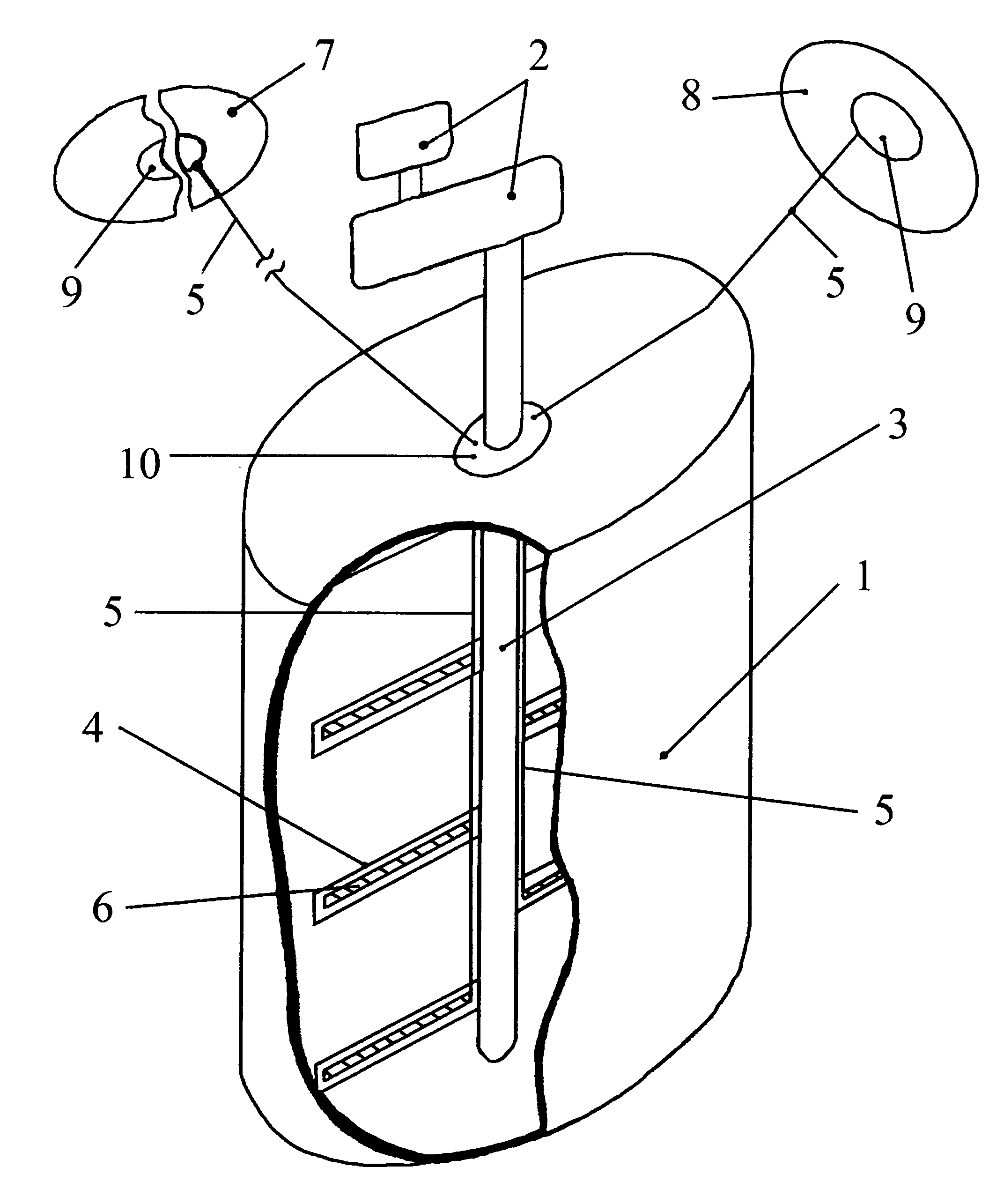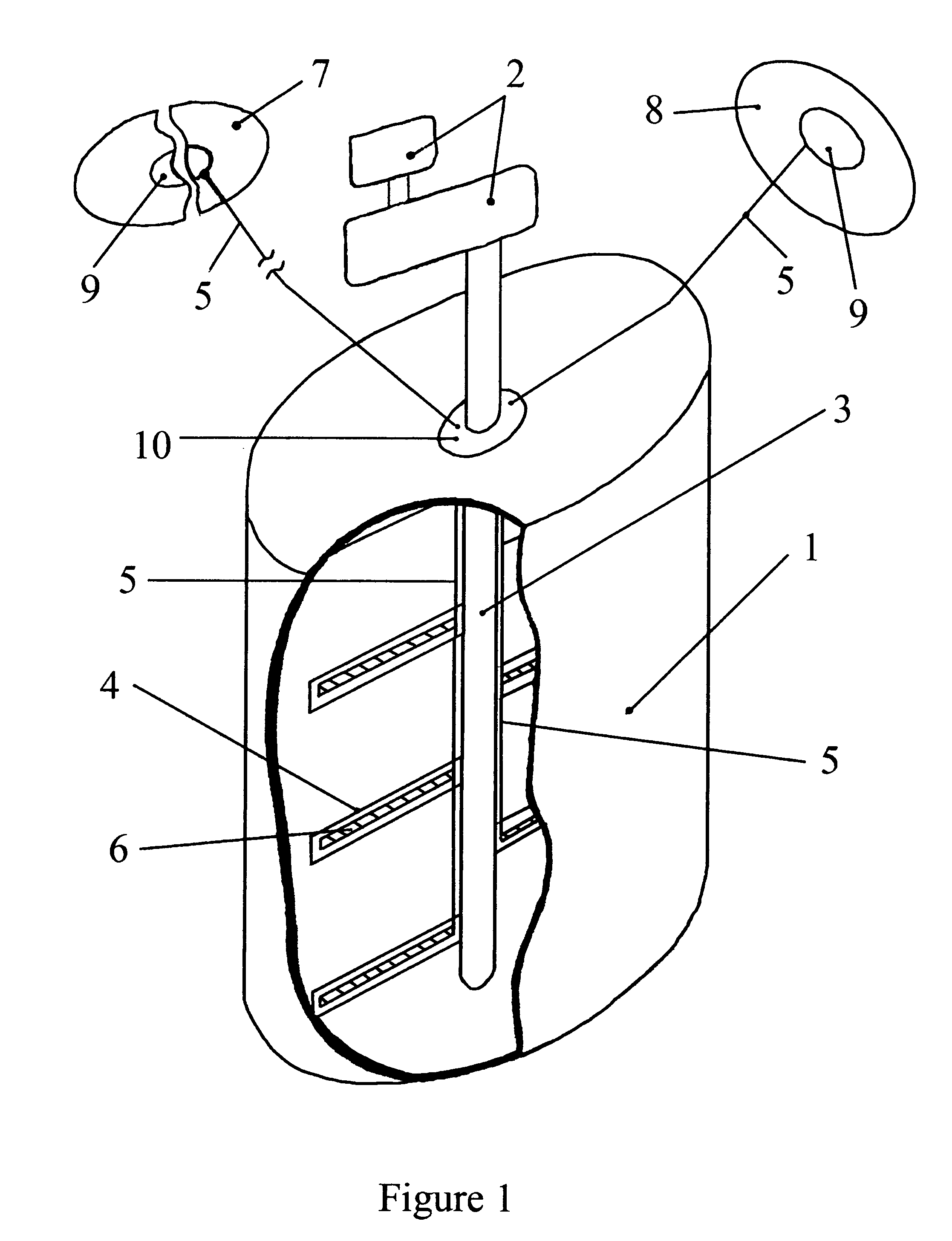Photobioreactors for production of algae and methods therefor
- Summary
- Abstract
- Description
- Claims
- Application Information
AI Technical Summary
Benefits of technology
Problems solved by technology
Method used
Image
Examples
example 1
Photobioreactors with Rotating Light Emitting Devices
[0087]A photobioreactor was constructed as shown in FIG. 2. The tank portion for containing algae and carbon dioxide had a rectangular shape and was constructed as a continuous photobioreactor. The tank contained Scenedesmus dimorphus algae along with Bold's Basic Medium consisting of (for 400 ml) 10 g NaNO3, 2 g MgSO4.7H2O, 4 g K2HPO4, 6 g KH2PO4, 1 g CaCl2, and 1 g NaCl.
[0088]The rotating mixing system contained within the tank included motors with a gearbox in mechanical communication with shafts. The motor and gearbox was run at a speed of about 1.0 RPM. Rotating blades made from Plexiglas tubing were mounted on the shafts, with fluorescent bulbs installed inside these tubes. The rotating blades were capable of mixing all liquid microbial culture throughout the entire volume of the tank.
[0089]The lighting system included mirrors and solar panels to collect sunlight, and a light emitting device mounted inside the tubing so that...
example 2
Photobioreactors with Oscillating Light Emitting Devices
[0091]A photobioreactor was constructed as shown in FIG. 3. The tank portion for containing algae and carbon dioxide was constructed of Plexiglas and had a rectangular shape (72 inches in length, 14.5 inches in width, and 16 inches in height, wall thickness was ¼ inch). Ribs were added to the tank for reinforcement. The tank contained Scenedesmus dimorphus algae along with Bold's Basic Medium consisting of (for 400 ml) 10 g NaNO3, 2 g MgSO4.7H2O, 4 g K2HPO4, 6 g KH2PO4, 1 g CaCl2, and 1 g NaCl.
[0092]The oscillating mixing system included motors and gearboxes in mechanical communication with the frame system, and blades mounted on the frame system. In operation, the blades were capable of mixing all the culture throughout the entire volume of the tank.
[0093]The frame system included a fixed frame that supported an oscillating frame, a horizontally oscillating frame with a cleaning layer, and vertical oscillating frames including...
PUM
 Login to View More
Login to View More Abstract
Description
Claims
Application Information
 Login to View More
Login to View More - R&D
- Intellectual Property
- Life Sciences
- Materials
- Tech Scout
- Unparalleled Data Quality
- Higher Quality Content
- 60% Fewer Hallucinations
Browse by: Latest US Patents, China's latest patents, Technical Efficacy Thesaurus, Application Domain, Technology Topic, Popular Technical Reports.
© 2025 PatSnap. All rights reserved.Legal|Privacy policy|Modern Slavery Act Transparency Statement|Sitemap|About US| Contact US: help@patsnap.com



